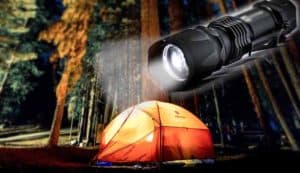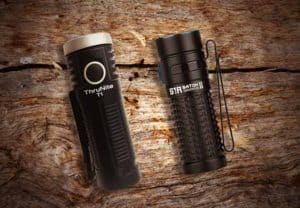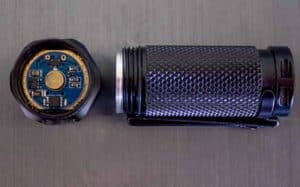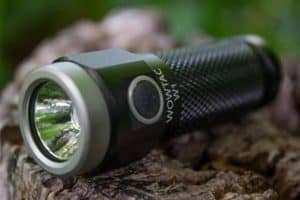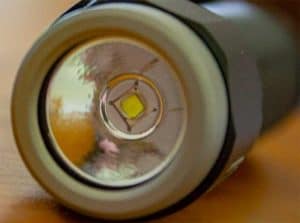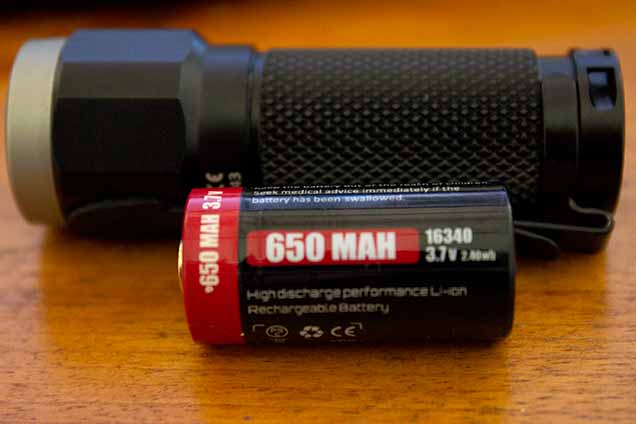

Editor & Article Writer for Outdoor Wilds
What Type of Battery is Used in a Flashlight
This article takes a look at what type of battery is used in a flashlight. In particular I’ll be focusing on battery types for modern high output LED flashlights only.
If you own a budget lower output flashlight that’s powered by (AA, AAA, C) batteries the choice is a lot easier. A lithium energizer is my prefered choice in this case.
In a pinch, a brand name alkaline will work fine as well. No need to look much further in selecting standard batteries for 1.5 volt low output flashlights.
There are rechargeable options here as well, but that’s a whole different subject in itself.
High Output Flashlights
In recent years with the advancement in circuitry and LED technology, high output flashlights have become more affordable, which is great news. However, when it comes to battery options powering these “wonders of illumination” can start to get a little confusing.
Let’s now move on and take a look at the whole myriad of numbers, capacities, sizes and voltages for batteries powering modern tactical, EDC and utility high lumen output flashlights to try and make some sense of it all.
Battery Chemistry Types
I’m not going to go into the science of the chemistries behind these. You just need to be aware that there are 2 main types to look out for.
Lithium-Ion – 3.7 volts for most modern rechargeable flashlights.
Nickel Metal Hydride (NiMH) – A replacement for Alkaline with a higher energy density.
The popular choice for high lumen output is the lithium-Ion chemistry. The advantages with lithium cells far outweigh the disadvantages when compared to a NiMH cell from my experiences using both types of cell.
Lithium-Ion Batteries
In a world of super high lumen outputs the lithium-Ion battery is the marvel behind it. They have a high capacity, plus a fast discharge rate that is matched by no other type of battery available today.
There are 5 key points you need to consider. I’ll go through each in turn and explain exactly what they are.
- Size – Denoted by a 5 digit number.
- Top shape – button or flat.
- Protection circuit – Protects against damage to cells.
- Capacity – How much energy is stored.
- Discharge rate – How fast / slow a battery is rated at.
You’re probably wondering why voltage is not listed. The reason for that is, lithium-Ion batteries are between 3.6 and 3.7 volts. There are no other variations when it comes to voltage.
Size in Numbers
Those long 5 digit numbers can look scary at first glance but they’re quite easy to understand when you break it down.
The first 2 numbers are the actual diameter in millimetres. The second pair is the length in millimetres and the last number which is always zero denotes the battery is cylindrical.
Some common numbers that you’ll see on lithium flashlight batteries are:
- 14500 – This is the same physical size as an AA battery
- 16340 – (3 Volt – CR123) A smaller size battery used in EDC flashlights –
- 18650 – 3.7 Volt rechargeable commonly used in flashlights
- 26650 – Larger version of the 18650
- 21700 – Latest technology, soon to replace 18650
The sizes I’ve listed here are ones you’ll see powering most major brands such as Nitecore, Streamlight, Olight to name a few.
There are of course, a whole load of other numbers / size lithium batteries on the market. Fortunately they are becoming less frequently used by the manufacturers as a power source for modern LED emitters.
Flat Top and Button Top Batteries
The positive end of a battery has 2 types and it’s easy to distinguish the physical difference between them.
Button tops have a raised connection and flat tops, yes you guessed it are flat at the positive end of the battery.
It’s important that you select the correct type to ensure there is a solid connection between the battery and the terminal inside the head of the torch.
Check the technical specification for the flashlight to see which suits the connections inside the barrel.
Protection Circuit
Many Lithium-Ion batteries have a protection circuit housed at the top of the cell. This adds a few millimetres to the overall length of the battery, so check to see if it fits inside your flashlight with a circuit.
A protection circuit is there to prevent discharge at low voltages, less than 2.8 volts. It also prevents overcharge, where a battery may charge at too high a rate.
The circuit is an essential safety feature on lithium batteries. This is due to the fact, overcharge becomes dangerous for prolonged periods which may lead to the possibility of fires or the escape of toxic fumes. The protection circuit is there to prevent this happening.
Capacity
Measured in both milliamp hours (mAh) and watt-hour (Wh) the higher in number the more capacity the battery can hold resulting in longer runtimes across all lumen output modes.
If you’re good at maths there is a formula to convert from mAh to Wh. I tend to use this handy converter [1] to calculate between the two instead.
You’ll tend to see capacity shown in mAh more often than Wh. Watt-hour is useful as a means to compare batteries with different voltages. Whereas mAh the comparison is only possible between similar voltage cells.
The highest capacities you’re likely to see are between 3500 – 5000 mAh for flashlight batteries.
Discharge Rate
Discharge rate is measured as C-rate [2]. This can be slightly confusing as you won’t see the C-rate shown on the cell. Instead you’ll see the C-rate converted to amp rate. Commonly you’ll see 8A or 10A indicating the discharge rate.
Generally speaking you’ll need a battery with an 8 to 10 amp rating for most high lumen flashlights.
Check the maximum current drain to see if it’s listed in the specification. If not, then in most cases 8A will be high enough.
Summary
Always check the specification of the flashlight beforehand. Have a look down the list to see the size and top shape fits.
Check the capacity, usually go for the highest possible and if it’s listed the correct discharge rate to match the manufacturers spec.
I you’d like to know how to maintain and care for your flashlight, have a read of my article dedicated to flashlight maintenance.
Popular Posts

